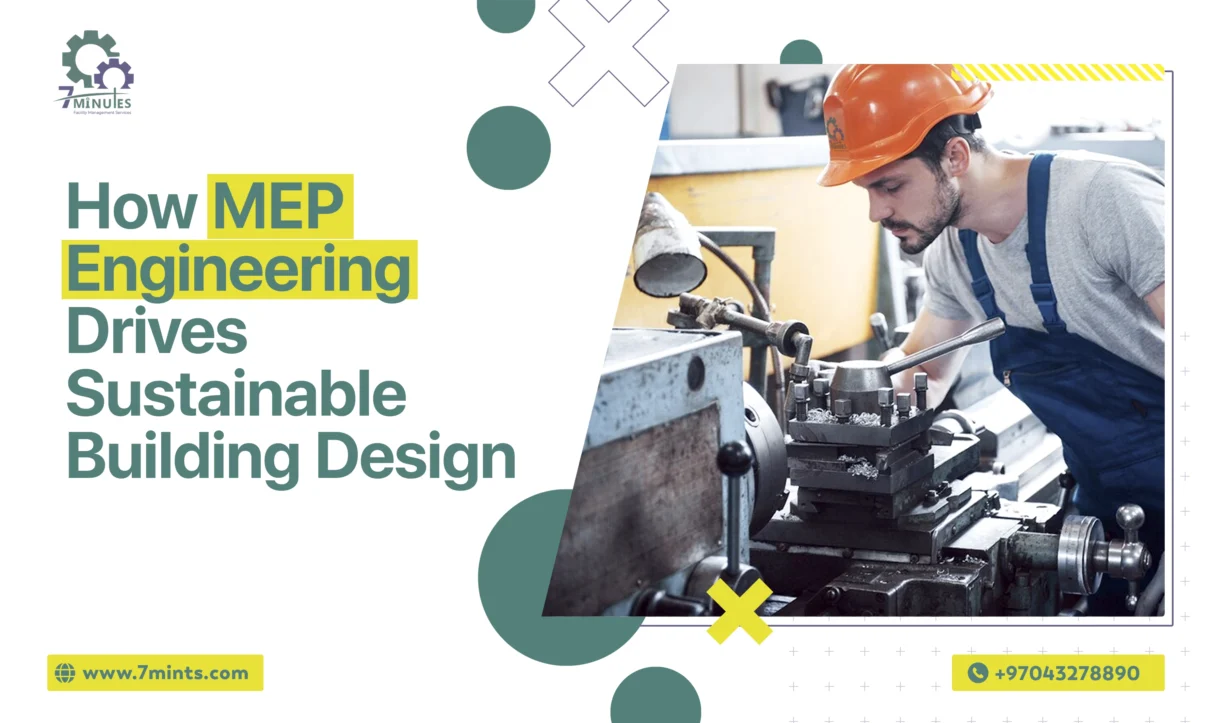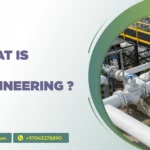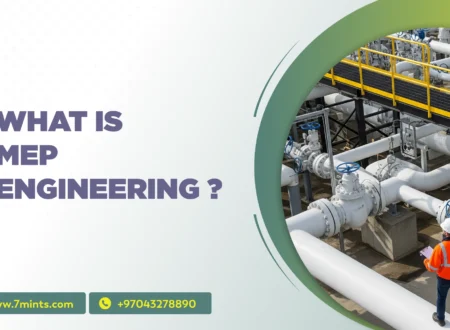Sustainable building design is one of the means by which the construction industry is changing, setting the standards of how we approach the built environment. The core part of this new-age movement is the MEP engineering—mechanicals, electricals, and plumbing. Modern MEP engineering is truly at the forefront—this type of engineering has evolved from behind-the-scenes technical work to being directly responsible for ensuring that buildings reduce their environmental impact, contribute to occupant health, and remain forever energy-efficient. Here is a holistic view of how MEP engineering drives sustainable building design, with each of its key aspects explained at length.
What is MEP Engineering?
MEP engineering combines the three main branches of engineering: mechanical (HVAC), electrical (power, lighting, and control), and plumbing (water supply, waste, and fire protection). Systems devised and installed by MEP engineers are fundamental to the functioning and comfort of any building. While in green design, these systems become even more crucial in helping to reduce the building’s carbon footprint, along with operational costs and environmental impacts. Keeping these goals in mind, MEP engineers work closely with architects and sustainability consultants to optimize the equipment, layout, and controls to best serve the people and the planet.
How MEP Engineering Influences Sustainability
Energy Efficiency and Advanced Climate Control
Efficient HVAC Design
Energy-efficient HVAC systems attract nothing less than utmost planning and design by the MEP Engineer. Such engineers select high-performance equipment such as VRF systems, state-of-the-art chillers, and energy recovery ventilators so that little energy is lost. Air conditioning and heating loads get cut down by means of insulation, duct sealing, and zoning, and so are energy bills and the building’s carbon emissions throughout its lifetime.
Smart Controls for Watch and Performance
Other than equipment, MEP engineers also detail advanced building management systems (BMS) to coordinate lighting with HVAC and other mechanical systems. This form of automation reduces energy demand while also feeding useful data back to facility managers for future refinement.
Sustainable Commissioning Practices
Commissioning is an important step where building systems are inspected by MEP professionals to ensure that the systems perform as intended before building occupation. Sustainable commissioning carries the fine-tuning of controls, calibration of sensors, and operator training for sustained, efficient performance.
Onsite Renewable Energy Subsystems
The current day’ MEP engineering supports the acceptance of all renewables such as solar PV panels, wind turbines, and geothermal heat pumps, by reviewing building designs and considering local resources and utility rates to compose an effective renewable mix, integrating all aspects into the overall power and mechanical systems. This reduces dependence on nonrenewable grid electricity and also paves the way to enable long-term energy independence of buildings.
Grid-Connected and Off-Grid Capability
By careful design and engineering, MEP engineers can create buildings capable of operating on their own or with the public power grid. Battery storage systems can be installed to hold extra renewable energy for times when energy generation is low, such as nighttime or cloudy days. This strategy truly reinforces the building’s resilience and its ability to support the grid by giving it clean energy.
Lower Carbon Emissions & Long-Term Savings
With building structures embracing the greatest possible share of renewable energy while cutting down on fossil fuel use, the target of reducing greenhouse gas emissions becomes something these systems almost achieve. Despite a relatively high barrier to adoption with installation costs, energy cost stability, and a reduced carbon footprint (which cannot be measured in dollars) stand tall as equally weighty arguments in favor of MEP-based renewable inclusion in sustainable design.
Water Conservation and Responsible Plumbing Solutions
Water Fixtures that are Low-Flow and Higher-Efficiency
Installation and specification of fixtures should prioritize the reduction of potable water use. MEP engineers specify low-flow faucets and showerheads as well as dual-flush toilets to ensure that minimum water is consumed for maximum utility.
Revolutionary Water Recycling Systems
Usually, an MEP design considers greywater recycling methods where wastewater from basins, laundries, and showers gets treated onsite and reused for irrigation or toilet flushing. Rainwater harvesting, in contrast, collects and stores rain for non-potable use to lessen dependence on the municipal supply system and recharge the local water table. Both of these technologies vie in the promotion of closed-loop water systems and in fortifying the building to withstand droughts or supply interferences.
Leakage and Smart Monitoring
Plumbing systems now commonly integrate smart leak detection sensors and real-time water consumption monitors. These systems instantly alert building operators to leaks and inefficiencies, enabling them to address issues quickly for water conservation and property protection. When the system feeds this information into an analytics engine, it precisely identifies patterns, improvements, and efficient water use among the occupants.
ENHANCING INDOOR ENVIRONMENTAL QUALITY (IEQ)
Healthy Air and Ventilation Systems
The MEP engineers are an integral piece when designing ventilation systems that provide the required fresh air yet save on energy. The attention to air quality delivers comfort that protects the occupants from respiratory ailments and nurtures their well-being.
Thermal Comfort and Acoustic Performance
The MEP engineer tackles the challenges related to nuisances of drafts, temperature fluctuations, and noise caused by mechanical equipment. Mechanical system acoustic insulation, a careful layout of ductwork, and zoning serve to minimize the propagation of unwanted sound and set up a tranquil working environment for the occupants of the buildings.
Daylighting and Biophilic Elements Integration
MEP engineers, therefore, coordinate with the architects to design the electrical lighting system so that it would complement natural daylight and thus lessen energy loads. Automated shading, smart glass, and occupancy sensors keep lighting at its best only when needed, thereby improving mood and concentration and conserving electricity.
USE OF SUSTAINABLE MATERIALS & PREFABRICATION
Choice of Environmentally Friendly Components
Sustainable building services include the use of air distribution systems, piping, insulation, and wiring manufactured using non-toxic, recycled, or local materials. This choice reduces the embedded carbon and thus helps the local economy while limiting pollution and ensuring healthier indoor air quality as VOCs are avoided.
Modular and Prefabricated MEP Solutions
Manufacturers produce prefabricated MEP assemblies in carefully controlled environments to minimize waste, ensure higher quality, and reduce installation time at the construction site. Such off-site integration of the MEP design and construction shall reduce construction time, reduce errors, and lower the carbon footprint of the building even further, making it attractive for larger or more complex projects that need rapid, scalable, and uniform solutions.
Waste Reduction and Quality Control Enhancements
Prefabrication works toward minimizing the major environmental impacts associated with construction, such as material cut-offs, transportation, and site disturbance. With standardized designs and highly accurate fabrication, these processes produce less scrap, demand fewer deliveries, and ensure installation to stringent tolerances that enhance system performance.
Life-Cycle Cost Analysis and Maximizing Long-Term Value
Up-Front Investment versus Operational Efficiency
MEP engineers conduct lifecycle cost analyses to present the considerations of small stakeholders from a singular perspective when choosing between alternative systems, aiming to identify the most feasible and sustainable option. These analyses include purchase and installation costs in the initial stages, along with expected savings on energy, water, and maintenance throughout the building’s life.
Minimizing Maintenance and Replacement Costs
By building for durability and reliability, MEP designs minimize the number and cost of repairs or replacements of systems. For instance, corrosion-resistant materials, high levels of filtering, and easy service access mean fewer interruptions and less cost for the long haul. Check out our latest blog post on Top 10 MEP Engineering Challenges and Smart Solutions for 2025
Increasing Asset Value
Buildings equipped with efficient, resilient, and sustainable MEP systems stand higher on asset value, are more acceptable to eco-friendly tenants, and usually are able to attract higher lease rates. Over time, the proven performance of these systems gives a property a lead in a sea full of unsustainable competitors, so it’s a win-win strategy.
Automation, Smart Building Technologies, and Data Analytics
IoT Integration
MEP systems lie in the early stages of the development of IoT devices—predictive maintenance sensors, meters, and automated controllers that provide granulated real-time feedback on energy, water, and environmental performance.
Artificial Intelligence and Predictive Optimization
MEP engineers utilize such insight to optimize building operation, predict and schedule maintenance, and even prosecute and correct inefficiencies at performance levels far greater than possible if done manually.
Remote Access and User Empowerment
Monitoring building systems remotely—from applications and dashboards to cloud platforms—promises to put great management power into the hands of facility managers, if not the occupants themselves.
Supporting Green Building Certifications
To Meet the Requirements of LEED, BREEAM, and Others
Being at the core of the engineering process, MEP engineers must appropriately implement the measures targeted by certifications such as LEED and BREEAM. These frameworks set the highest standards of achievement in such areas as energy efficiency, water conservation, indoor air quality, and innovative behavior.
Documentation and Compliance
In pursuit of validation to the highest standards under the certifications, MEP engineers have to undertake studious documentation about performance, material selection, commissioning, and the operation of a system. This way, they can show adherence, while third-party assessors will be able to independently verify the sustainability of a given building, courtesy of said documentation, thereby protecting both the investments and reputation.
Trying to Stay Ahead
With the ever-present trend toward building codes becoming more stringent and incentive programs being introduced, MEP engineers keep at the forefront of project compliance. Adoption of the green standards early in the process guarantees future-proofing and provides competitive advantages and monetary incentives to the projects.
Conclusion
MEP engineering is not an auxiliary part but the very backbone of sustainable buildings. By carefully designing and managing the mechanical, electrical, and plumbing systems, MEP professionals create energy and water savings, improvements to health and comfort, and good adaptability of the buildings to future needs. Contact us for high-efficiency systems to integrate renewables, smart automation, and strict certification. MEP engineers serve as partners delivering green, economic, and social benefits.
Their knowledge is what ensures that green buildings do not just look sustainable but actually operate with true efficiency and resilience throughout their lifecycle, marking a critical path in the world of a healthier earth.










1 Comment
Comments are closed.